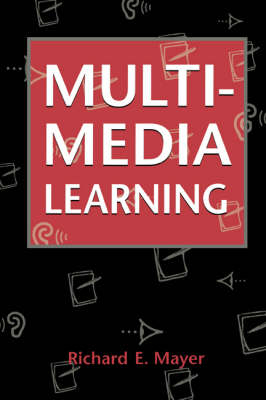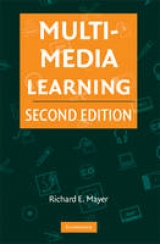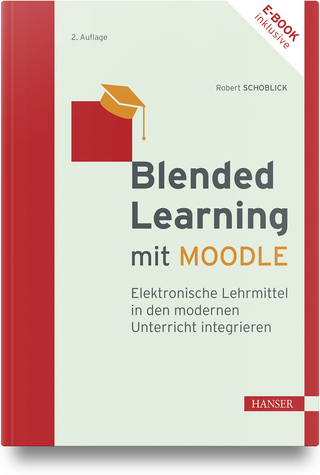
Multimedia Learning
Seiten
2001
Cambridge University Press (Verlag)
978-0-521-78749-9 (ISBN)
Cambridge University Press (Verlag)
978-0-521-78749-9 (ISBN)
- Titel erscheint in neuer Auflage
- Artikel merken
Zu diesem Artikel existiert eine Nachauflage
For hundreds of years verbal messages have been the primary means of explaining ideas to learners. Although verbal learning offers a powerful tool for humans, this book explores ways of going beyond the purely verbal. An alternative to purely verbal presentations is to use multimedia presentations.
For hundreds of years verbal messages - such as lectures and printed lessons - have been the primary means of explaining ideas to learners. In Multimedia Learning Richard Mayer explores ways of going beyond the purely verbal by combining words and pictures for effective teaching. Multimedia encyclopedias have become the latest addition to students' reference tools, and the world wide web is full of messages that combine words and pictures. Do these forms of presentation help learners? If so, what is the best way to design multimedia messages for optimal learning? Drawing upon 10 years of research, the author provides seven principles for the design of multimedia messages and a cognitive theory of multimedia learning. In short, this book summarizes research aimed at realizing the promise of multimedia learning - that is, the potential of using words and pictures together to promote human understanding.
For hundreds of years verbal messages - such as lectures and printed lessons - have been the primary means of explaining ideas to learners. In Multimedia Learning Richard Mayer explores ways of going beyond the purely verbal by combining words and pictures for effective teaching. Multimedia encyclopedias have become the latest addition to students' reference tools, and the world wide web is full of messages that combine words and pictures. Do these forms of presentation help learners? If so, what is the best way to design multimedia messages for optimal learning? Drawing upon 10 years of research, the author provides seven principles for the design of multimedia messages and a cognitive theory of multimedia learning. In short, this book summarizes research aimed at realizing the promise of multimedia learning - that is, the potential of using words and pictures together to promote human understanding.
1. The promise of multimedia learning; 2. Multimedia instructional messages; 3. A cognitive theory of multimedia learning; 4. Multimedia principle; 5. Spatial contiguity principle; 6. Temporal contiguity principle; 7. Coherence principle; 8. Modality principle; 9. Redundancy principle; 10. Individual differences principle; 11. Principles of multimedia design.
| Erscheint lt. Verlag | 23.4.2001 |
|---|---|
| Zusatzinfo | 83 Line drawings, unspecified |
| Verlagsort | Cambridge |
| Sprache | englisch |
| Maße | 154 x 230 mm |
| Gewicht | 377 g |
| Themenwelt | Schulbuch / Wörterbuch ► Unterrichtsvorbereitung ► Unterrichts-Handreichungen |
| Geisteswissenschaften ► Psychologie ► Allgemeine Psychologie | |
| Geisteswissenschaften ► Psychologie ► Verhaltenstherapie | |
| Sozialwissenschaften ► Pädagogik | |
| ISBN-10 | 0-521-78749-1 / 0521787491 |
| ISBN-13 | 978-0-521-78749-9 / 9780521787499 |
| Zustand | Neuware |
| Informationen gemäß Produktsicherheitsverordnung (GPSR) | |
| Haben Sie eine Frage zum Produkt? |
Mehr entdecken
aus dem Bereich
aus dem Bereich
elektronische Lehrmittel in den modernen Unterricht integrieren
Buch (2024)
Hanser, Carl (Verlag)
49,99 €
Grundwissen für Zahntechniker, Band 2
Buch | Softcover (2022)
Neuer Merkur (Verlag)
44,00 €
die Zusammenfassung
Buch | Softcover (2023)
Fachwirteverlag
24,80 €



